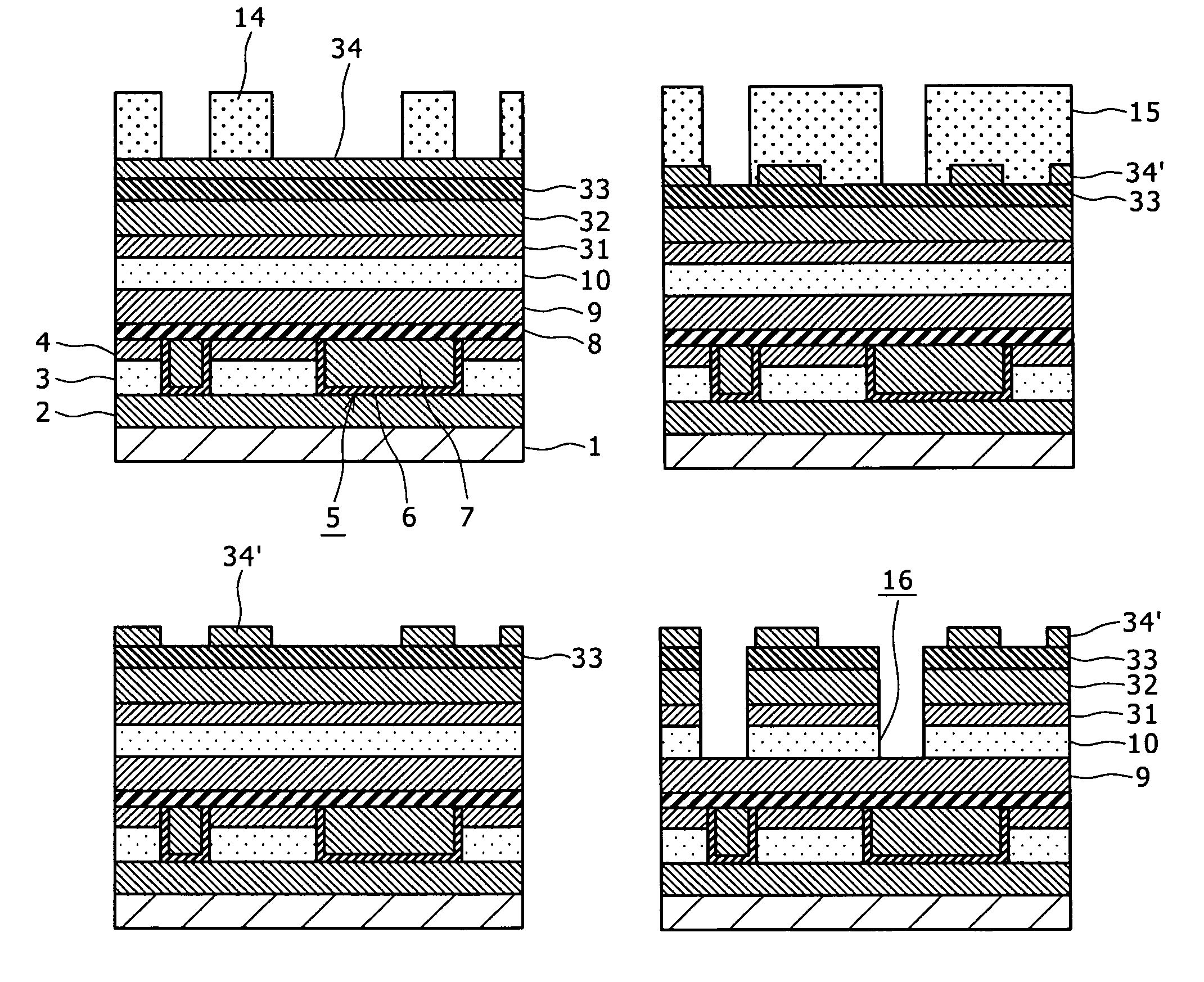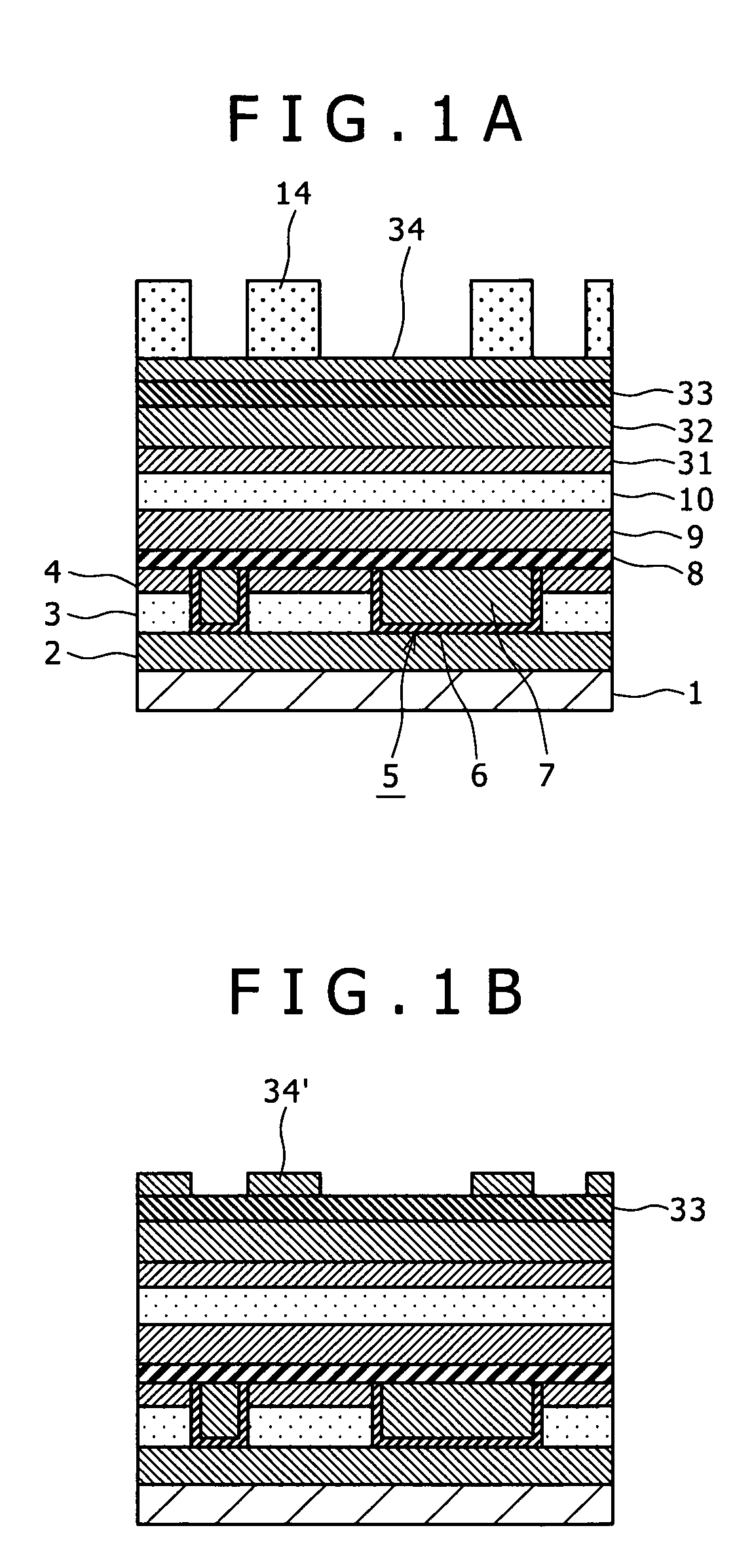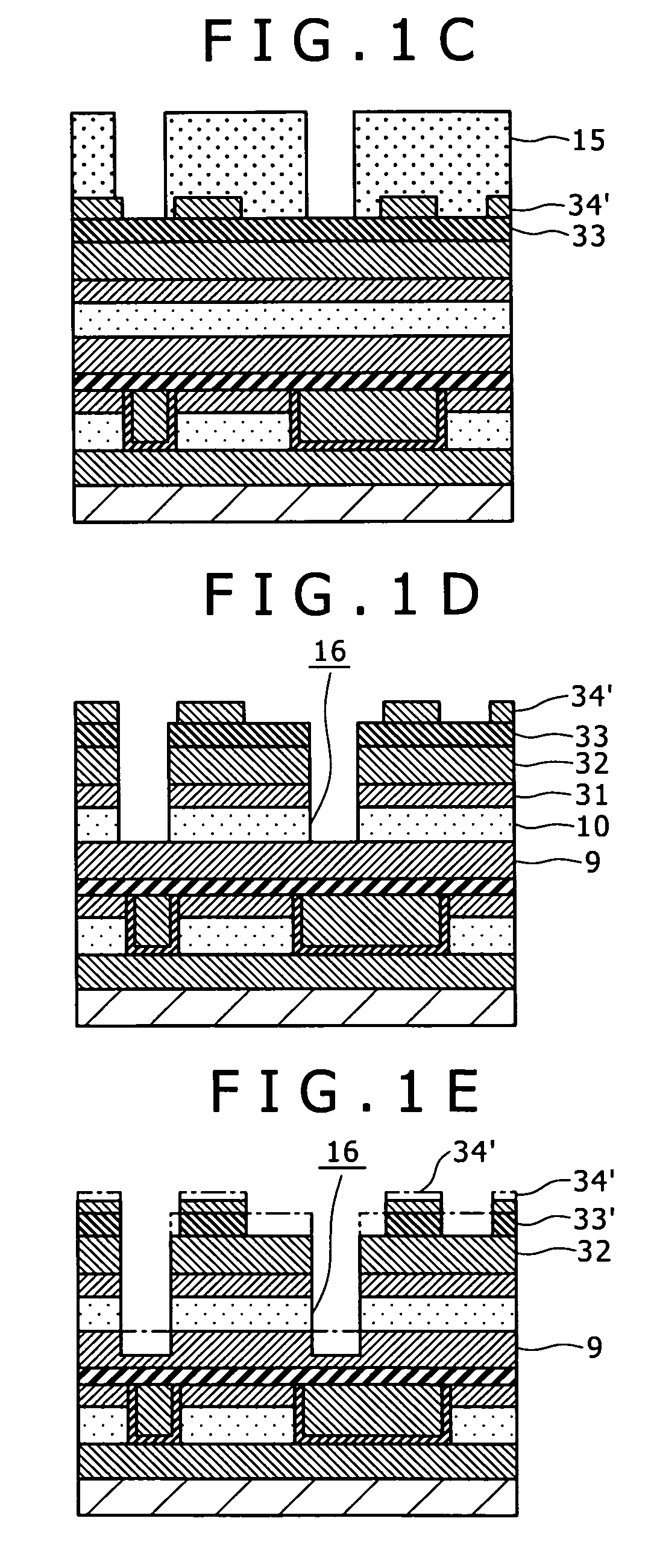Method of manufacturing semiconductor device and semiconductor device
a manufacturing method and semiconductor technology, applied in semiconductor devices, semiconductor/solid-state device details, electrical apparatus, etc., can solve the problems of increasing serious problems attributed to the time constant of interconnects, difficulty in dry etching patterning, and dual damascene methods, etc., to enhance interconnect reliability, suppress operation delays, and suppress electromigration and stress migration
- Summary
- Abstract
- Description
- Claims
- Application Information
AI Technical Summary
Benefits of technology
Problems solved by technology
Method used
Image
Examples
first embodiment
[0052]The following embodiment example shows a method of manufacturing a semiconductor device according to a first embodiment of the present invention. The first embodiment relates to the formation of a dual damascene structure by a trench-first approach, in which the formation of a mask pattern for forming interconnect trenches (interconnect trench pattern) precedes the formation of a mask pattern for forming via holes (via hole pattern). The first embodiment will be described below with reference to FIGS. 1A to 1K, which are sectional views illustrating manufacturing steps. The same elements in FIGS. 1A to 1K as those in FIG. 7A to FIG. 9 for the above-described manufacturing method as background techniques are given the same numerals.
[0053]Referring initially to FIG. 1A, over a base silicon substrate 1 having thereon element regions and so on (not shown), a multilayer film of a PAE film 3 (k=2.3) with a thickness of 90 nm and an SiOC film (MSQ) 4 (k=3.0) with a thickness of 140 n...
first modification
[0088]In the above description, the whole second mask 32′ is removed by CMP. Alternatively, as shown in FIG. 2, the thin-film second mask 32′ may remain on the entire first mask 31′. In this structure, the first mask 31′ serves as a third insulating film that defines the interconnect trenches 17, while the second mask 32′ serves as a fourth insulating film that also defines the interconnect trenches 17.
[0089]FIG. 3 is a graph showing the interconnect capacitance of the structure of FIG. 2 as a function of the thickness of the second mask 32′ (the fourth insulating film) that remains on the first mask 31′ (the third insulating film) with a thickness of 50 nm. In the graph, the interconnect capacitances are plotted with the thickness of the second mask 32′ being changed from 0 nm to 20 nm with an increment of 5 nm. The semiconductor device in which the thickness of the second mask 32′ (see FIG. 2) is 0 is obtained through the same method as that of the first embodiment. Note that the ...
second embodiment
[0092]A method of manufacturing a semiconductor device according to a second embodiment of the present invention will be described below with reference to FIGS. 4A to 4K, which are sectional views illustrating manufacturing steps. The same elements in the second embodiment as those in the first embodiment are given the same numerals, and detailed description thereof will be omitted.
[0093]Referring initially to FIG. 4A, in the second embodiment, the manufacturing process is advanced in the same way as the first embodiment until the step of forming Cu interconnects 7 in a PAE film 3 and an SiOC film 4 after sequential deposition of the PAE film 3 and the SiOC film 4 over a substrate 1 with the intermediary of a base insulating film 2 therebetween.
[0094]Subsequently, a first etching stopper film 8a and a second etching stopper film 8b are sequentially formed on the Cu interconnects 7 and the SiOC film 4. The first etching stopper film 8a is composed of SiC and has a thickness of 35 nm ...
PUM
 Login to View More
Login to View More Abstract
Description
Claims
Application Information
 Login to View More
Login to View More - R&D
- Intellectual Property
- Life Sciences
- Materials
- Tech Scout
- Unparalleled Data Quality
- Higher Quality Content
- 60% Fewer Hallucinations
Browse by: Latest US Patents, China's latest patents, Technical Efficacy Thesaurus, Application Domain, Technology Topic, Popular Technical Reports.
© 2025 PatSnap. All rights reserved.Legal|Privacy policy|Modern Slavery Act Transparency Statement|Sitemap|About US| Contact US: help@patsnap.com



